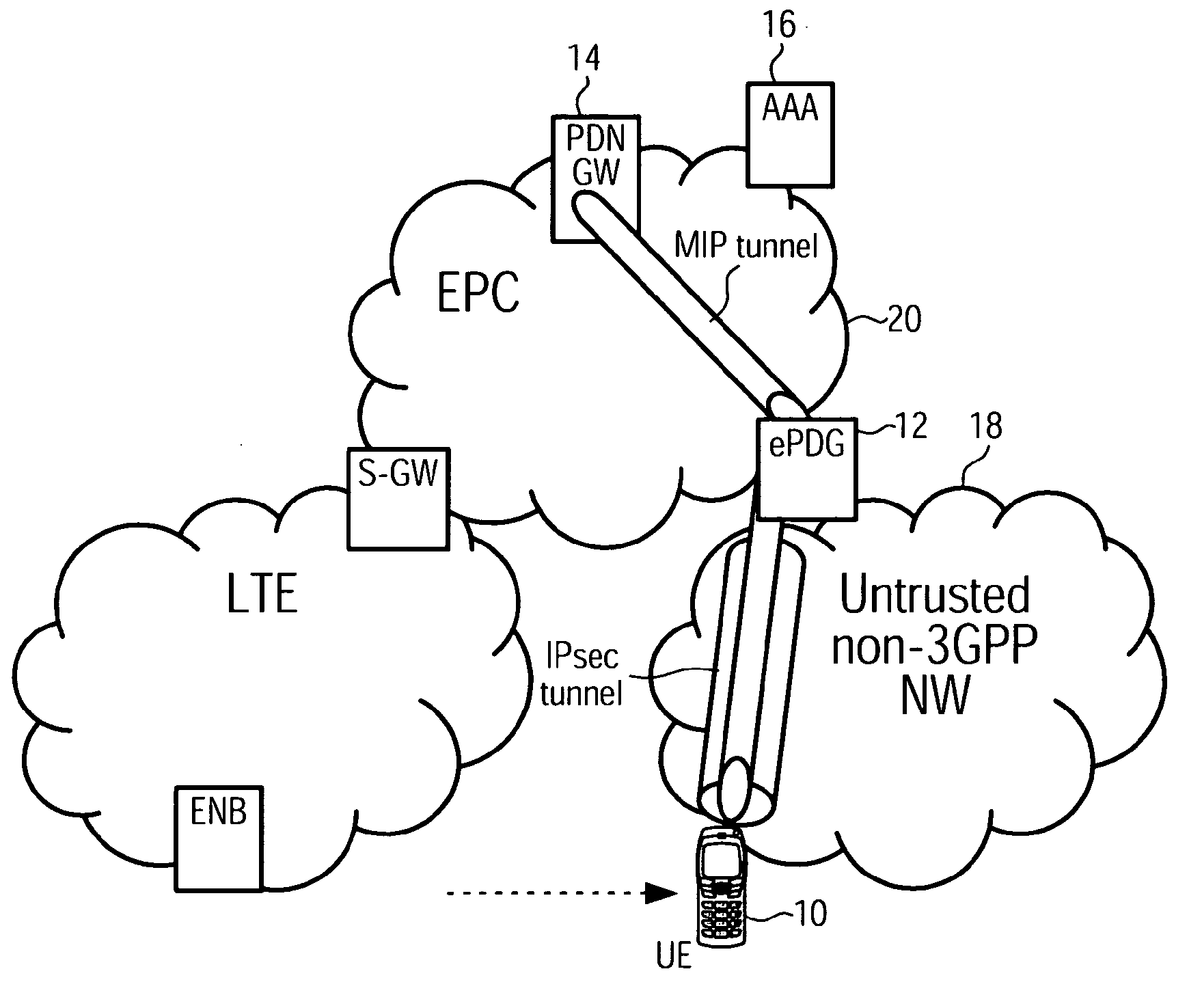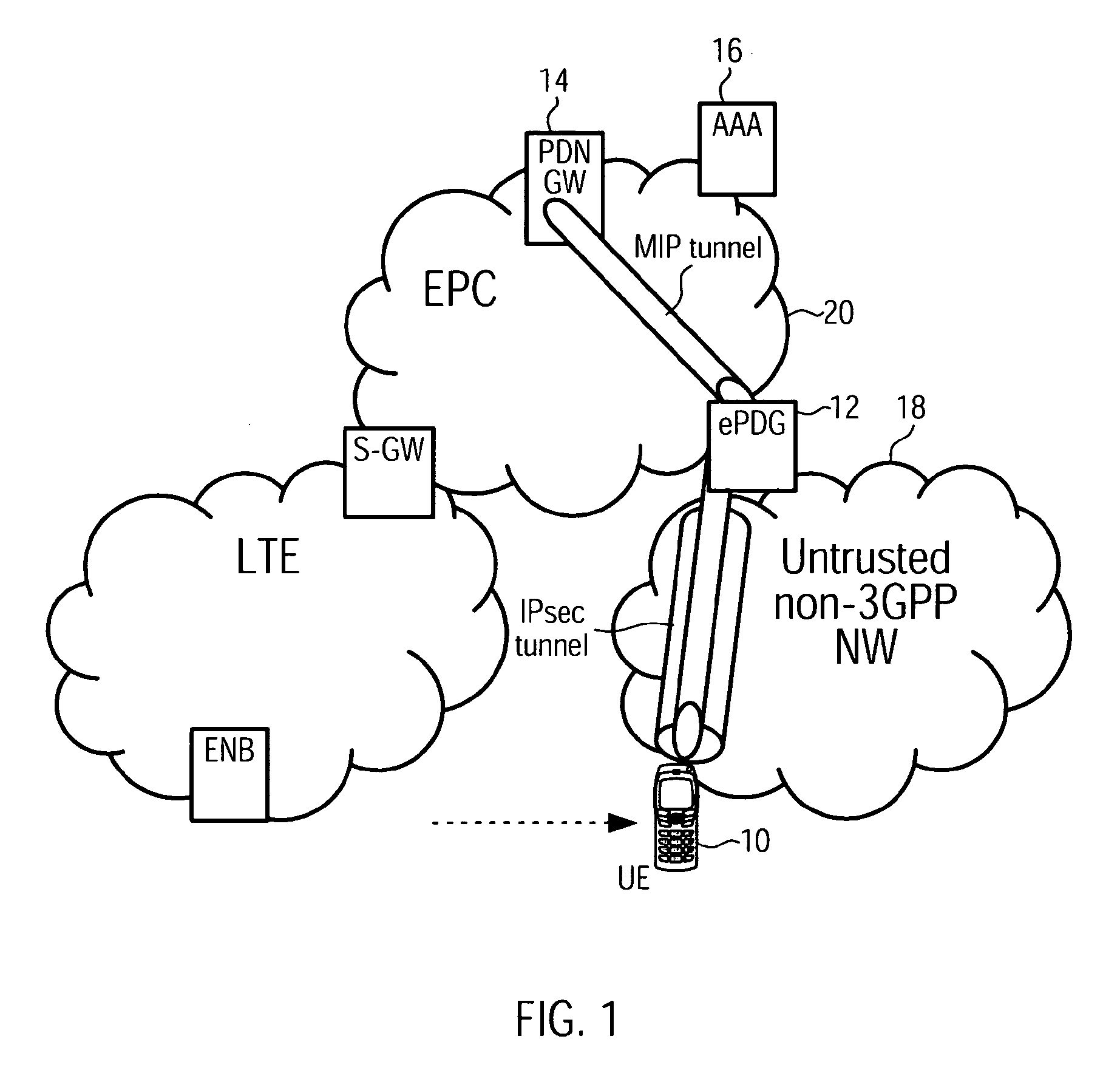Access-Network to Core-Network Trust Relationship Detection for a Mobile Node
a trust relationship and mobile network technology, applied in the field of mobile communications, can solve the problems of difficult or rather inefficient procedure, large list size, and slow procedure, and achieve the effect of easy determination
- Summary
- Abstract
- Description
- Claims
- Application Information
AI Technical Summary
Benefits of technology
Problems solved by technology
Method used
Image
Examples
Embodiment Construction
[0073]The following paragraphs will describe various embodiments of the invention including the detection of a trust relationship between a 3GPP core network and a non-3GPP access network, and illustrates further alternative configurations.
[0074]For exemplary purposes only most of the embodiments are outlined in relation to a 3GPP communications system, and the terminology used in the subsequent sections mainly relates to 3GPP terminology. However, the terminology used and the description of the embodiments with respect to a 3GPP architecture are not intended to limit the principles and ideas of the inventions of such systems.
[0075]Also the detailed explanations given in the technical background section above are merely intended to better understand the mostly 3GPP specific exemplary embodiments described in the following, and should not be understood as limiting the invention to the described specific implementations of processors and functions in the mobile communications network....
PUM
 Login to View More
Login to View More Abstract
Description
Claims
Application Information
 Login to View More
Login to View More - R&D
- Intellectual Property
- Life Sciences
- Materials
- Tech Scout
- Unparalleled Data Quality
- Higher Quality Content
- 60% Fewer Hallucinations
Browse by: Latest US Patents, China's latest patents, Technical Efficacy Thesaurus, Application Domain, Technology Topic, Popular Technical Reports.
© 2025 PatSnap. All rights reserved.Legal|Privacy policy|Modern Slavery Act Transparency Statement|Sitemap|About US| Contact US: help@patsnap.com



